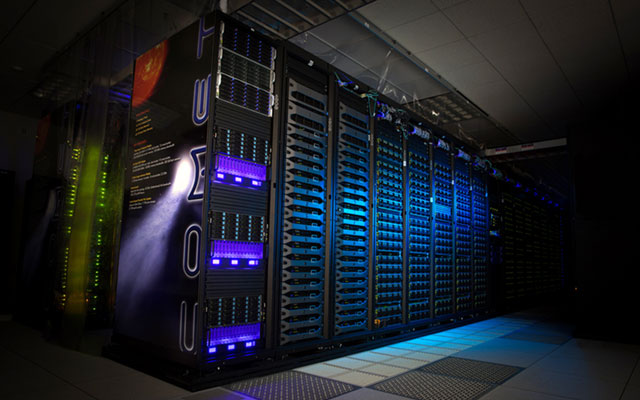
SDSC’s ‘Comet’ Supercomputer Extended into 2021
National Science Foundation Awards nearly $2.4 Million for Sixth Year of Service
Published Date
By:
- Jan Zverina
Share This:
Article Content
The National Science Foundation (NSF) has awarded the San Diego Supercomputer Center (SDSC) at UC San Diego a supplemental grant valued at almost $2.4 million to extend operations of its Comet supercomputer by an additional year, through March 2021. The extension brings the value of the total Comet program to more than $27 million.
Since entering service in May 2015, Comet has established itself as one of the most widely used supercomputers in the NSF’s XSEDE (eXtreme Science and Engineering Discovery Environment) program, which connects researchers to an advanced collection of integrated digital resources and services.
“Comet has served researchers as a key resource among a wide range of science domains and is an important resource for the analysis of data from large scientific instruments that led to recent landmark discoveries by scientists at the Laser Interferometer Gravitational Wave Observatory (LIGO), the IceCube Observatory, and XENON Collaboration,” said SDSC Director Michael Norman.
While Comet is capable of an overall peak performance of two petaflops – or two quadrillion calculations per second – its design, allocation, and operational policies are focused on maximizing scientific productivity by lowering barriers to accessing HPC resources through science gateways, rapid access accounts, and job scheduling optimizations targeted at modest scale computing jobs.
Since Comet entered production in 2015, it has served more than 1,700 unique PIs at some 350 institutions. Today there are more than 1,300 active allocations covering all 50 U.S. states.
“Advanced but user-friendly resources such as the Comet supercomputer underscore a vital need for systems that serve a broad range of research, with a focus on researchers who have modest-scale computational needs,” said SDSC Deputy Director Shawn Strande. “From the outset, Comet was configured the serve the long tail of science, or the idea that the large number of modest-sized computationally-based research projects represents, in aggregate, a tremendous amount of research and scientific advances.”
GPU Power Doubled
SDSC recently doubled the number of graphic processing units (GPUs) on Comet in direct response to growing demand for GPU computing among a wide range of research domains. The expansion, made under an earlier supplemental NSF award valued at about $900,000, provided for the addition of 36 GPU nodes, each with four NVIDIA P100s, doubling the number of GPUs from the previous 144 to 288.
That award makes Comet the largest GPU resource available through the XSEDE program. Applications include but are not limited to GPU-memory management systems such as VAST, analysis of data from large scientific instruments, and molecular dynamics software packages such as AMBER, LAMMPS, and BEAST – the latter used extensively by SDSC’s Cyberinfrastructure for Phylogenetic Research (CIPRES) science gateway, which receives the majority of its computing resources from Comet.
The NSF award number is 1341698.
Share This:
You May Also Like
Stay in the Know
Keep up with all the latest from UC San Diego. Subscribe to the newsletter today.



